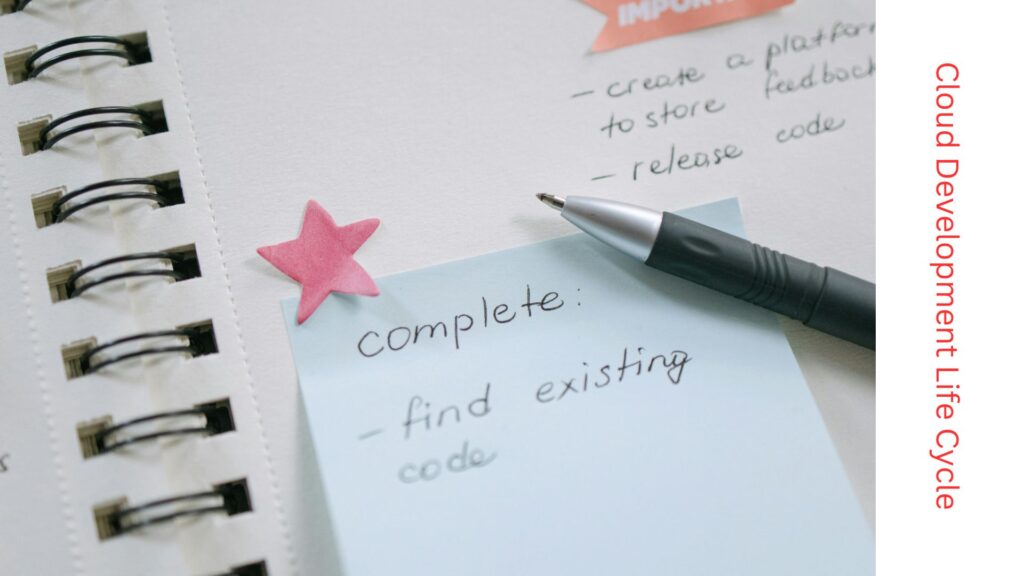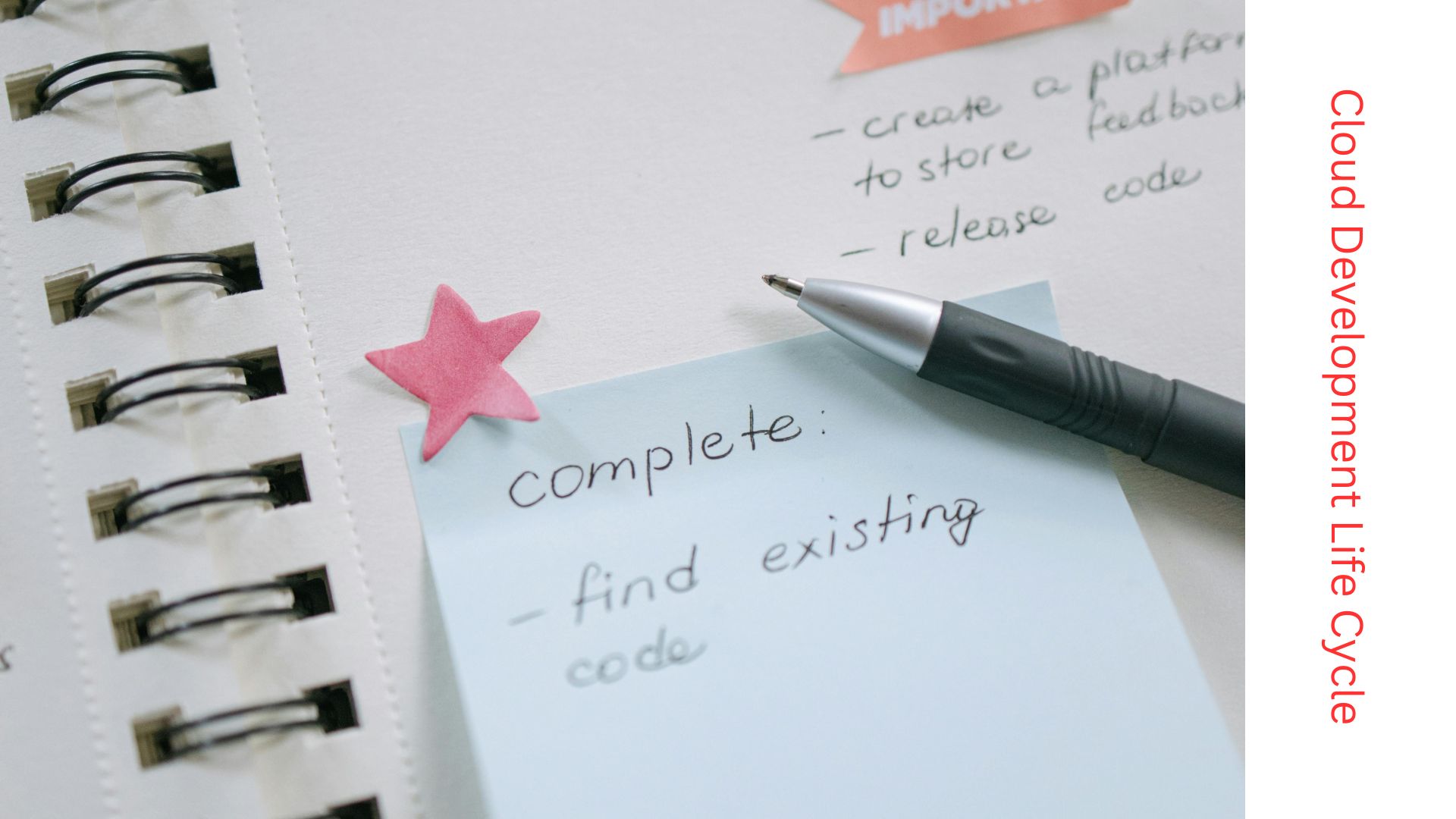Cloud Development Life Cycle (CDLC) Guide 2024: A Comprehensive Overview
The Cloud Development Life Cycle (CDLC) encompasses everything from the initial decision to create software to the point where support is discontinued.
Unlike the traditional Software Development Life Cycle (SDLC), cloud service development places significant emphasis on the role of the cloud provider, which is essential for the success of the project.
This method allows you to:
- Visualize the complex development process: Gain a clear understanding of each phase in the development cycle.
- Manage projects effectively: Oversee and coordinate various aspects of the project to ensure smooth execution.
- Predict and plan work product delivery: Forecast timelines and plan for the delivery of work products throughout the development process.
- Manage budget overruns: Monitor and control budget expenditures to avoid exceeding financial limits.
- Determine the current development stage quickly: Assess the progress and status of development at any given moment.

What Separates Cloud Development Lifecycle [ CDLC ] from SDLC
- Business Needs and Costs: In some cases, the SDLC has led to increased business needs while reducing costs. Companies using on-site infrastructure often face long update cycles and suboptimal software performance.
- Agility and Adaptability: The Cloud Development Lifecycle (CDLC) differs significantly from the SDLC by being more agile and adaptable to changing enterprise needs. This flexibility allows for quicker adjustments and improvements throughout the development process.
- Scalable Distributed Services: The CDLC is at the forefront of internet-based scalable distributed services. According to NIST, cloud computing provides a model that enables ubiquitous, convenient, on-demand network access to a shared pool of configurable computing resources.
- Rapid Provisioning: These resources, which include networks, servers, storage, applications, and services, can be rapidly provisioned and released with minimal management effort or service provider interaction.
- Development and Launch Differences: The most significant differences between SDLC and the Cloud Development Lifecycle are observed in the development and launch phases. The CDLC’s approach allows for more rapid development and deployment compared to traditional SDLC methods.
Software Development Methodologies
Your team size goals and other factors influence the choice of the best SaaS product lifecycle software development methodology. Here is a list of the most popular software development methodologies used for our projects:
- Agile Development: Agile development minimizes bugs, cost overruns, and issues with changing requirements when adding new functionality. Teams develop software in iterations, delivering incremental updates throughout the process. Agile methods include Scrum, Crystal, XP (Extreme Programming), and Feature-Driven Development. Each of these approaches focuses on iterative progress and flexibility to adapt to evolving project needs.
- Pros: Agile software development’s primary advantage is its iterative release process. Teams can identify and fix bugs early, set clear expectations, and improve efficiency through frequent, incremental updates. This method also accelerates the delivery of software benefits by continuously rolling out enhancements.
- Cons: Agile development requires real-time communication, which can lead to a lack of documentation for new users. This means users must invest significant time in understanding the process, and developers need to complete each feature within every iteration to secure user approval. Additionally, dedicated development teams, managers, and companies accustomed to waterfall methodologies may face challenges adapting to agile SDLCs. As a result, hybrid approaches often provide a more effective solution for such teams.
DevOps Development Methodology:
The DevOps development methodology fosters an organizational culture that enhances collaboration between development, quality assurance, and operations departments through effective organizational change.
Pros: DevOps significantly reduces release failures, shortens fix lead times, and minimizes disruptions while maximizing reliability. By automating continuous deployment, DevOps organizations ensure smooth and dependable operations. Additionally, DevOps accelerates time to market, boosts customer satisfaction, improves product quality, and enhances employee productivity and efficiency.
Cons: Despite its advantages, DevOps has some drawbacks. Certain customers may prefer less frequent system updates. Industry regulations might necessitate extensive testing before a project can go live. Furthermore, using different environments across departments can lead to undetected issues being introduced into production. Additionally, some quality attributes that require human interaction can slow down delivery.

Waterfall Development Methodology:
The Waterfall method is a traditional software development approach known for its straightforward linear structure, making it suitable for quick launches. It follows a sequential process with distinct phases: requirements, design, implementation, verification, and maintenance. Each phase must be completed before moving on to the next, and adjusting the project’s direction is typically not possible once a phase is underway.
Pros: The linear nature of Waterfall makes it easy to understand and manage. It works best for projects with clearly defined goals and stable requirements. This method is often suitable for inexperienced project managers, teams with stable structures, or projects with well-understood and unchanging requirements.
Cons: Due to its rigid structure and tight controls, Waterfall development can be slow and expensive. These limitations might lead users to explore other software development methodologies that offer more flexibility and efficiency.
Choosing the Right Methodology:
All the software development methodologies mentioned—Agile, DevOps, and Waterfall—are popular and have their respective strengths and weaknesses. Selecting the right methodology depends on your team and project needs. By combining elements from each approach, you can create a hybrid development methodology that aligns with your goals and ensures a safe and efficient path to production. Discuss your specific concerns with our team, and we’ll offer a tailored solution to meet your requirements.
Examples of Cloud SDLC Phases
Understanding each step of the Cloud Software Development Life Cycle (SDLC) is crucial before progressing to the next phase. The first three stages typically focus on answering key questions and defining requirements, while the last three stages are aimed at optimizing and refining results.
- Planning and Requirements Gathering: This initial phase involves identifying the project goals, gathering requirements, and defining the scope. It is essential to establish a clear understanding of what needs to be achieved and to create a comprehensive plan that addresses these needs.
- Design and Architecture: In this phase, the system’s architecture and design are developed. It includes creating design specifications, choosing appropriate technologies, and planning how the system will meet the identified requirements. This step lays the foundation for the development process.
- Development and Coding: During this stage, the actual coding and development of the software take place. Developers write code, integrate systems, and build the application according to the design specifications. This phase is focused on implementing the features and functionality outlined in the previous stages.
- Testing and Quality Assurance: After development, the software undergoes rigorous testing to identify and fix any issues or bugs. This phase ensures that the application meets the specified requirements and functions correctly. Testing may include functional testing, performance testing, and security testing.
- Deployment and Release: Once testing is complete and the software is deemed ready, it is deployed to the production environment. This phase involves the release of the application to users and includes activities such as configuration, data migration, and user training.
- Maintenance and Optimization: Post-deployment, the software enters the maintenance phase where ongoing support, updates, and optimizations are performed. This stage aims to address any issues that arise, improve performance, and ensure the application continues to meet evolving user needs.
By examining and analyzing each of these stages, you can optimize the results for your specific situation, ensuring a successful and efficient cloud development process.
Negotiating the SaaS Lifecycle
The negotiation phase marks the beginning of your project. It involves completing all necessary intellectual property paperwork, starting with signing a Non-Disclosure Agreement (NDA) to protect sensitive information.
During this stage, we will schedule our initial calls and discussions to thoroughly understand your SaaS product vision. We will select appropriate technologies and assemble a skilled team of specialists tailored to your needs. Following these discussions, I will create a customized proposal that takes into account the project’s requirements, timing, and budget. Once both parties review and agree to the proposal, we will sign the contract and move forward with the project.

System Analysis
The System Analysis phase involves determining what actions to take and which problems to address. Key activities include:
- Identifying Issues, Goals, and Resources: Assess the existing challenges, define the project goals, and evaluate available resources, including personnel and budget.
- Consulting Stakeholders: Engage with customers, suppliers, consultants, and employees to explore alternative solutions and gather diverse perspectives.
- Competitive Analysis: Analyze how your product can be enhanced to outperform competitors and meet market demands.
After gathering and analyzing this information, you can decide whether to build a new system, improve the existing one, or consider other options.
During the System Analysis phase, three key specialists play crucial roles:
- Business Analyst: Focuses on identifying the competitive niche, creating customer profiles, and mapping out the customer journey roadmap. They analyze market needs and define the project’s goals and requirements.
- Architects: Develop technological solutions and select appropriate technologies. They design the system architecture, ensuring that it aligns with the project’s objectives and technical requirements.
- Designer: Creates UX/UI product sketches, focusing on the user experience and interface design. They translate user needs into visual and functional design elements.
In addition to these roles, it is essential to define and document system end users’ expectations and determine how to meet them. A project feasibility study evaluates its organizational, economic, social, and technological viability. Effective customer communication is vital for understanding the end product’s functions and ensuring that it meets the specified requirements.
System Design
The System Design phase begins after a thorough understanding of customer needs has been established. This phase involves defining the system’s components, security levels, modules, architecture, interfaces, and data types. It establishes both the appearance and functionality of the system, translating conceptual designs into detailed, actionable plans.
Key Activities in System Design:
- Business Analyst: Manages the project portfolio, roadmap, and both functional and non-functional requirements. They define tasks for the development team and ensure alignment with project goals.
- Designer: Works from the design documentation to create detailed user interface (UI) and user experience (UX) elements, ensuring the design meets the documented requirements.
- Architect: Prepares the software and DevOps design documentation, outlining the technical structure and deployment strategy of the system.
- Development Team: Prepares for the development phase by acquiring technical knowledge from the architect, creating a testing strategy, reviewing documentation, and setting up all development environments and interfaces.
This stage ensures that all functional and technical requirements are addressed both logically and physically, setting the stage for successful development and implementation.
Development of SaaS
In the Development phase, the project manager plays a crucial role in explaining developer tasks, communicating with the client, and ensuring effective connection between the client and the development team. This specialist manages Scrum sprints, project timelines, and results, ensuring that the project progresses according to the plan.
This phase follows the comprehension of system requirements and specifications. It involves the actual development of the system, where code is written, and hardware is configured and tuned to meet specific requirements and functions. Once development is complete and the system is visually ready, it moves into customer installation and operational launch. End users may require training to effectively use the system, and the implementation process can vary in duration based on the system’s complexity.
Deploy and Test
In the Deploy and Test phase, components and subsystems are combined into a single integrated system. The system undergoes various tests to analyze its behavior, functionality, and performance based on real inputs. Testing, which increasingly focuses on user experience rather than just coding or hardware configuration, is essential for ensuring customer satisfaction. The goal is to validate that the system operates correctly and meets the specified requirements before full deployment.

System Aid
The System Aid phase involves ongoing technical support to keep the system current and functional. This includes updating hardware and software components, assessing performance, and ensuring that the system meets evolving standards and incorporates the latest technologies to address security threats.
Maintaining effective customer communication is crucial throughout this phase. Prototypes and iterative development approaches are essential for implementing requirements and ensuring that the system aligns with customer needs before full-scale development. By building and refining the system in short iterations, many lifecycle models—such as the iterative model and agile model—aim to save time, money, and effort while minimizing the risk of non-compliance with customer requirements.











